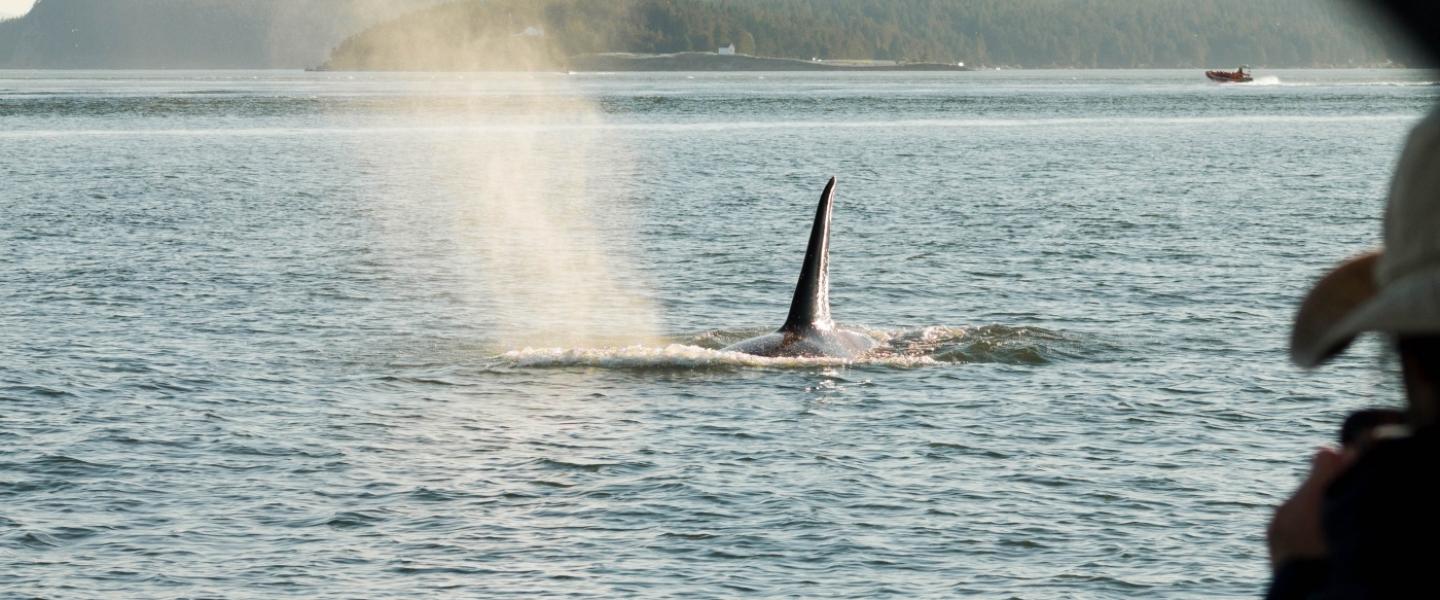
(October 28, 2017) Autumn is the best season to experience the San Juan Islands. The crowds of visitors have thinned dramatically, weather is often epic, and wildlife is more abundant than in the summer. This fall has been exceptional. Bobbing out upon the Salish Sea under crystal clear skies, my eyes have been busy drinking in the vibrant golds and rusty hues of maple, oak, willow, and cherry burrowed into the deep green canvas of Pacific Northwest firs. Competing for my attention are the snow-capped peaks further back and the glistening bodies of sea monsters in the foreground with their rainblow puffs drifting in the breeze. [Rainblows, I was recently informed, are the vertical rainbows generated as the sunlight refracts through the mist of a whale’s exhaled breath.]
This day’s whale watch began with a curious pair of adult humpback whales. After a brief summer spent gorging on krill and schooling fish, the sprawling mass of these behemoths suggests that they’re ready for a winter in Hawaii. While it may sound dreamy to you and I, the migration to Hawaii, some 3,000 miles, will be made at the rate of about 3 miles per hour. They’re also beginning a period of fasting that will last for several months. When they arrive at last, males will occupy their time wooing females and occasionally running each other off, while females will give birth to a calf that will hungrily suckle her fat reserves during nursing. Then, as winter wanes, the population will begin the trek back to our west coast, fending off occasional killer whale attacks with mixed success.
The two humpbacks that we observed today swam side by side. One of them was easily identified as a resident female nicknamed “Heather,” while the other one’s identity took some serious sleuthing by Naturalist Piper to reveal as “Comet.” With moans and groans clearly audible to surface-dwelling mammals, I’m attached to my theory that Comet is an amorous male attempting to get an early start on the mating season.
Rounding the misty north slope of Orcas Island, we added another whale species to our list: killer whale. This sighting was also unique in that some members of the pod logged on the surface for an extended period, appearing motionless. Killer whales always seem to be on the move, even after a big kill and while sleeping. A closer observation of the scene revealed that one whale was trailing the group. Its surfacings seemed awkward, and dives shorter. Its dorsal fin had an odd, spade shape in profile, rather than the erect triangle that is typical. Another naturalist identified the pod as the T2C’s. The slower animal has a spinal deformity, but at 12 years old, the whale lives on, likely as a result of the patience and care of his family.
Andrew Munson
Naturalist
San Juan Safaris, M/V Sea Lion